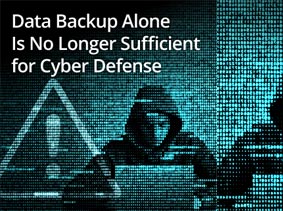TPRM - Third Party Risk Management
Mergers and Acquisitions
Cybersecurity Due Diligence in Mergers and Acquisitions.
Mergers and Acquisitions (M&A) is a complex, lengthy courtship process that should bring two entities closer together, and cybersecurity has emerged as a core element in the process. For example, consider the regulatory environment around data breaches. With both the delayed reporting and heightened fine structure under FTC or the GDPR, it's very easy to imagine acquiring a company that will trigger a violation post close and thereby damage the reputation or security posture of the acquiring entity, at significant expense.

The currant malware and ransomware epidemics continue to have wide impact, both on under resourced government entities and on large entities with significant cyber capability. Business interruption is the major concern for all companies.

If you are a company that has recently completed a merger or may be contemplating an M&A transaction, how can you filter out the risky acquisitions from seemingly positive disclosure?
-
Core Project Monitoring
-
Project Monitoring
-
Get Your Final Result
There’s always increasingly complex risk: There’s always digital due diligence
SecOp remains active in the M&A market, acquiring a range
of technology service providers, IT consultants, MSPs and cybersecurity companies.
Third party risk management (TPRM) is vital in today's business world. Identifying,
managing and mitigating risks to your organisation is crucial for success, growth and
resilience.
With recent global crisis and the uncertainties they create, the
risks associated with your third parties, especially in your supply chain, are becoming
increasingly important and more complex than ever. These can cover meeting regulatory
obligations e.g. Know Your Customer (KYC), compliance with your internal risk process and
procedures, or better understanding the companies and individuals you may be involved
with. Enhancing due diligence is critical to protect your organisation, reputation and
brand.
Step one – Identify your risks
Due diligence is an important part of TPRM. Done manually, it is time intensive, inconsistent and messy, especially when it is global. Our artificial intelligence (AI) technology makes it efficient, rigorous, scalable and we can tailor it to your risk requirements. Just some of the features you can expect from our due diligence tool include:
-
Flexibility in risk assessment
-
Breadth and depth of coverage
-
Over 90% reduction in false positives
-
Translation of over 40 languages
-
Speed
-
Dark web monitoring
-
Automated and integrated workflows
-
Continuous monitoring
-
Full audit trail
-
Paperless
Step two – Assess the risks
Our expert team, and our leading technology, gives you confidence that you have identified the key risks which may relate to areas such as bribery, PEPs, sanctions, data breaches and information security, and regulatory investigations or fines. We advise you on what impact the risk could have on your organisation, your reputation and your growth plans.
Step three – Manage and mitigate your risks
Once you have identified the risks and performed an
assessment of their impact on your business, we are on hand to delve deeper and
advise on how you can manage and mitigate those risks, especially those relating to
your supply chain. Your compliance process can be designed and implemented to address
this and any further due diligence that may then be required.
We believe that a well thought out, practical, robust and efficient TPRM process and
procedures will allow you to protect your organisation – your people, your reputation
and your future, saving time and resource.

